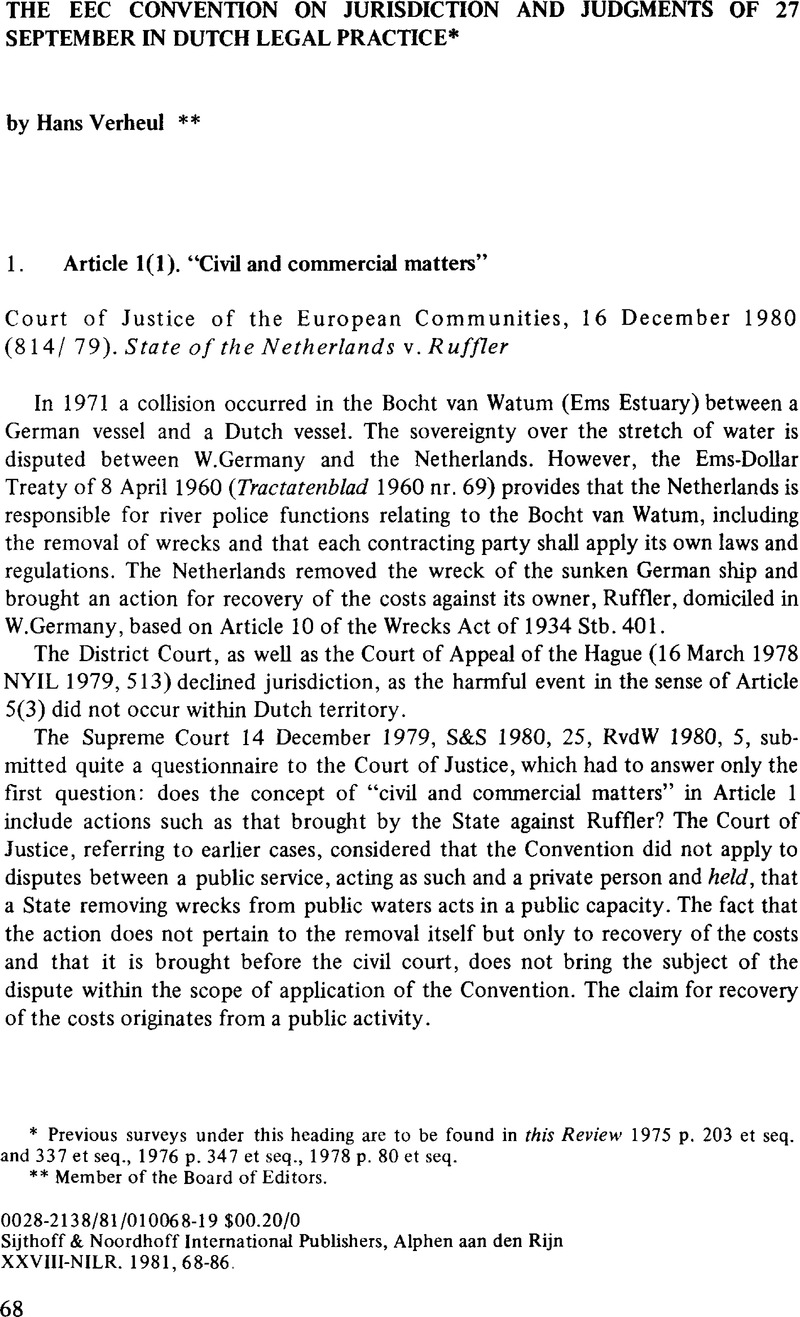No CrossRef data available.
Article contents
The EEC Convention on Jurisdiction and Judgments of 27 September in Dutch Legal Practice*
Published online by Cambridge University Press: 21 May 2009
Abstract

- Type
- The EEC Convention on Jurisdiction and Judgments of 24 September in Dutch Legal Practice
- Information
- Copyright
- Copyright © T.M.C. Asser Press 1981
References
1. The Court of Justice might have mentioned Art. 27(4) as well (V).
2. In the version of 13 June 1979, EEC Document III/682/79.
3. Off. Journal EC.C 59 at p. 122.
4. The English version of Art. 21 reads: “proceedings involving the same cause of action”. The Dutch version: “vorderingen … welke hetzelfde onderwerp betreffen en op dezelfde oorzaak berusten” (actions pertaining to the same subject and based on the same cause).
5. Cf., the French version: “des demandes ayant le même objet”. More remote but illustrative, Art. 171 of the French CCPr.: “une demande pour le meme object”, and – on res judicata – Art. 1351 French CCPr.: “II faut que la chose demandée soit la même”.
6. Sup. Ct. 23 November 1917, NJ 1918, 6.
7. Outside the scope of Conventions the question whether or not the foreign procedure has satisfactory provisions for urgent matters, is sometimes treated as relevant: Evans Marshall v. Bertola [1973] 1 WLR 349 CA; Pres. DC Rotterdam 5 February 1968, NJ 1969, 8, NILR 1971, 361.
8. Couchet also sought a new authorization from the German court, called Pfändungsbeschluss. This was the correct way. The decision of the Luxemburg Court does not reveal what happened with this alternative action.




